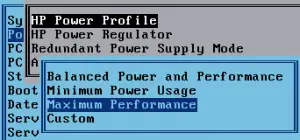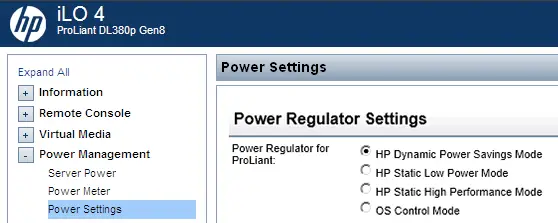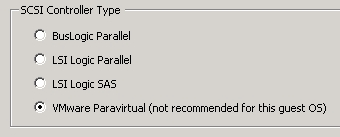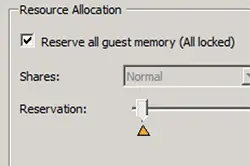I received this today, and thought the press release was worth sharing. Source touchdownpr.com
Today Blue Medora, an IT enterprise cloud and datacenter management company, announced a new management plug-in to support Microsoft Azure and Azure SQL. The new Blue Medora SelectStar product helps DBAs have the cost and availability of multi-cloud environments while maintaining the visibility of single-stack solutions.
SelectStar is the first cross-platform database performance software to include infrastructure insights from the two largest public cloud providers in a single view. This performance platform delivers a normalized view of more than 95 percent of production cloud-native or on-premises databases and their underlying cloud or virtualized infrastructure, which is ideal for organizations migrating their SQL stack to the cloud to save costs, and for those who support DevOps teams that depend on cloud-native databases to deploy new applications faster.
The full release is copied below for reference.
Blue Medora Expands SelectStar to Support Microsoft Azure, Azure SQL
SelectStar is the first cross-platform database performance software to include infrastructure insights from the two largest public cloud providers in a single view
GRAND RAPIDS, MI– April 27, 2017 – Blue Medora, a leading innovator in IT operational analytics (ITOA) for enterprise cloud, database and infrastructure management, today expanded its SelectStar SaaS database performance solution to support Microsoft Azure and Azure SQL databases. SelectStar for Azure provides metric-based and deep-dive monitoring for Azure native database workloads, enabling users to see query-level metrics on their Azure SQL databases.
Organizations are migrating production databases to the cloud for efficiency, cost and scale, but application performance and availability requirements often dictate a hybrid cloud, multi-DBMS environment. SelectStar for Azure offers a unique advantage over individualized cloud-native or on-premises proprietary solutions by enabling database administrators (DBAs) to track and optimize critical database performance and availability issues in these heterogenous environments with the same ease as a proprietary, on-prem stack.
The SelectStar performance platform delivers a normalized view of more than 95 percent of production cloud-native or on-premises databases and their underlying cloud or virtualized infrastructure. The platform is ideal for organizations migrating their SQL stack to the cloud to save costs, and for those who support DevOps teams that depend on cloud-native databases to deploy new applications faster.
“We’ve seen rapid growth in the Azure Cloud due to the increasing adoption of a multi-cloud strategy fueled by major outages and the rise of cloud-based data warehouses that were once on-prem SQL deployments” said Mike Kelly, CTO of Blue Medora and GM of SelectStar. “SelectStar’s Azure integration offers the best of both worlds, allowing DBAs to enjoy the cost and availability of multi-cloud environments while maintaining the visibility of single-stack solutions.”
Key benefits of SelectStar Microsoft Azure Monitoring include:
- Query Deep Dive Dashboard: Individual query analysis in context with other database query times for benchmarking, faster troubleshooting.
- Relationship Scaling: Key metrics about the underlying Azure infrastructure, like DTU and Elastic Pool usage to prevent throttling and oversubscription.
- Expert Recommendations: Embedded expertise for “accidental DBAs,” built-in recommendations to proactively repair Azure SQL performance and availability issues before the system triggers an alert.
- Dynamic Database Dashboard: A comprehensive overview of every database in an organization’s environment, including prioritized alerts and recommendations as well as current database health in one view.
- Advanced Analytics Dashboard: Report on query by name, average wait time, current wait time and lock time, executions, warnings and errors for an individual Azure SQL instance.
The new SelectStar services for Azure and Azure SQL are available immediately from Blue Medora. For more information, visit www.selectstar.io/integrations/cloud.
Additional resources:
SelectStar Product Page on Cloud
Video: 5 Steps for Better Azure SQL Performance (for Devs and accidental DBAs)
Source touchdownpr.com
 I checked this on my HP ProLiant blade servers and they were set to the default “Balanced Power and Performance.” The label doesn’t sound all that bad, but on further searching, this setting enabled the dynamic power management within a server. With this enabled, the CPU’s seemed to be powering down and taking additional time to power up when demand from vSphere increases.
I checked this on my HP ProLiant blade servers and they were set to the default “Balanced Power and Performance.” The label doesn’t sound all that bad, but on further searching, this setting enabled the dynamic power management within a server. With this enabled, the CPU’s seemed to be powering down and taking additional time to power up when demand from vSphere increases.
 VMware unanimously makes the recommendation to the the Paravirtualized SCSI adapters within guest OSes when running business critical apps on vSphere in all the courses linked above. Paravirtualized SCSI adapters are higher performance disk controllers that allow for better throughput and lower CPU utilization in guest OSes according to
VMware unanimously makes the recommendation to the the Paravirtualized SCSI adapters within guest OSes when running business critical apps on vSphere in all the courses linked above. Paravirtualized SCSI adapters are higher performance disk controllers that allow for better throughput and lower CPU utilization in guest OSes according to  VMware recommends reserving the entire memory allotment for virtual machines running business critical apps. This ensure no contention where high performance applications are concerned. vSphere 5 and higher with virtual hardware version 8 or higher has a checkbox that allows for reserving the entire allotment of vRAM, even as allocations change.
VMware recommends reserving the entire memory allotment for virtual machines running business critical apps. This ensure no contention where high performance applications are concerned. vSphere 5 and higher with virtual hardware version 8 or higher has a checkbox that allows for reserving the entire allotment of vRAM, even as allocations change.